Drees complete guide to kitchen design
Posted on Feb 26, 2024 by dreeshomes
Posted on Feb 26, 2024 by dreeshomes
For most families, the kitchen is the heart and hub of the home. It also tends to be the most expensive room to build, so getting the kitchen right is key to your overall custom home plan.
As you plan your kitchen design, think about:
In any kitchen design, the big three elements -- both in terms of style and budget -- are cabinets, countertops and flooring. Get these three decided before you move on.
In any kitchen design, the big three elements -- both in terms of style and budget -- are cabinets, countertops and flooring. Get these three decided before you move on.
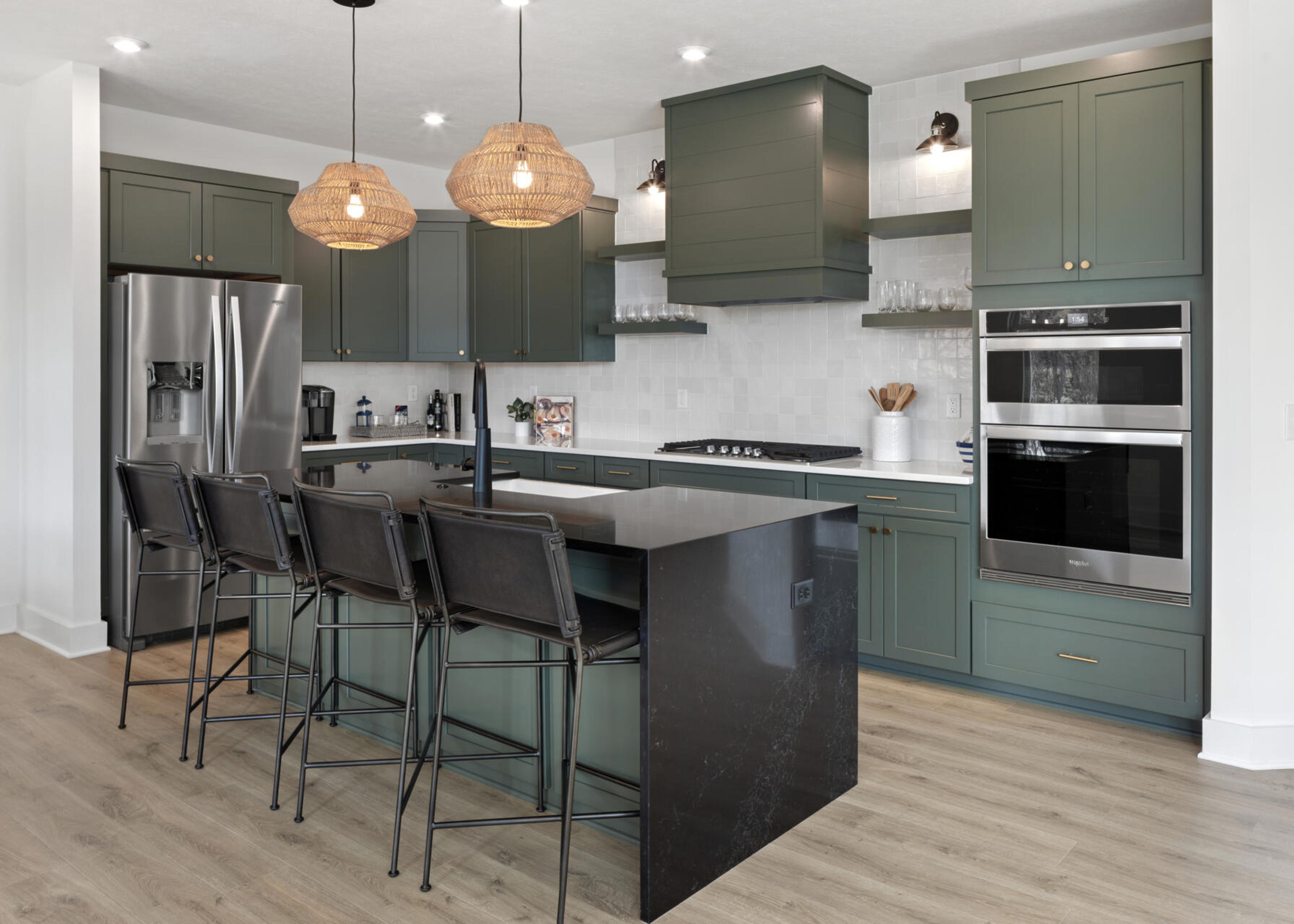
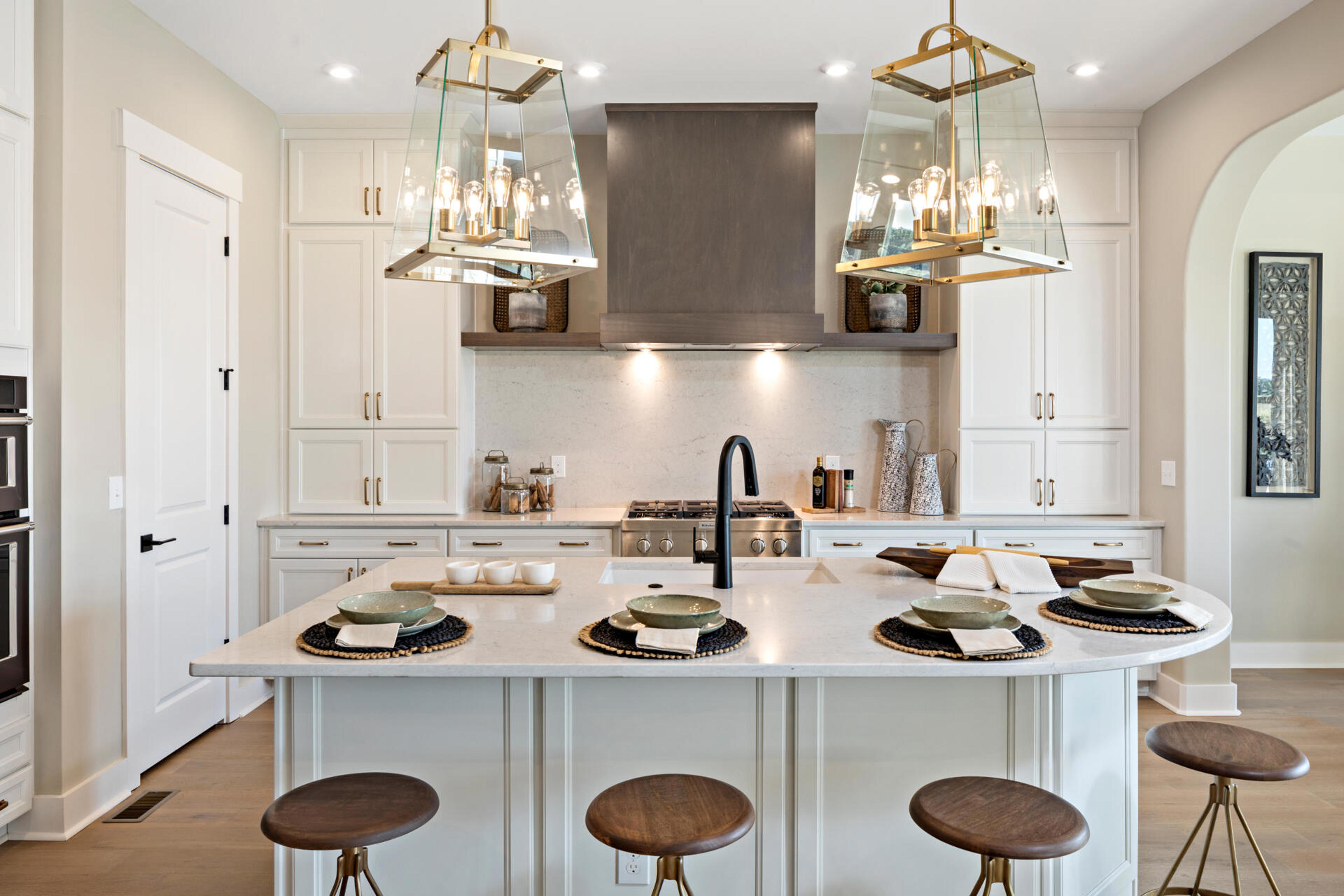
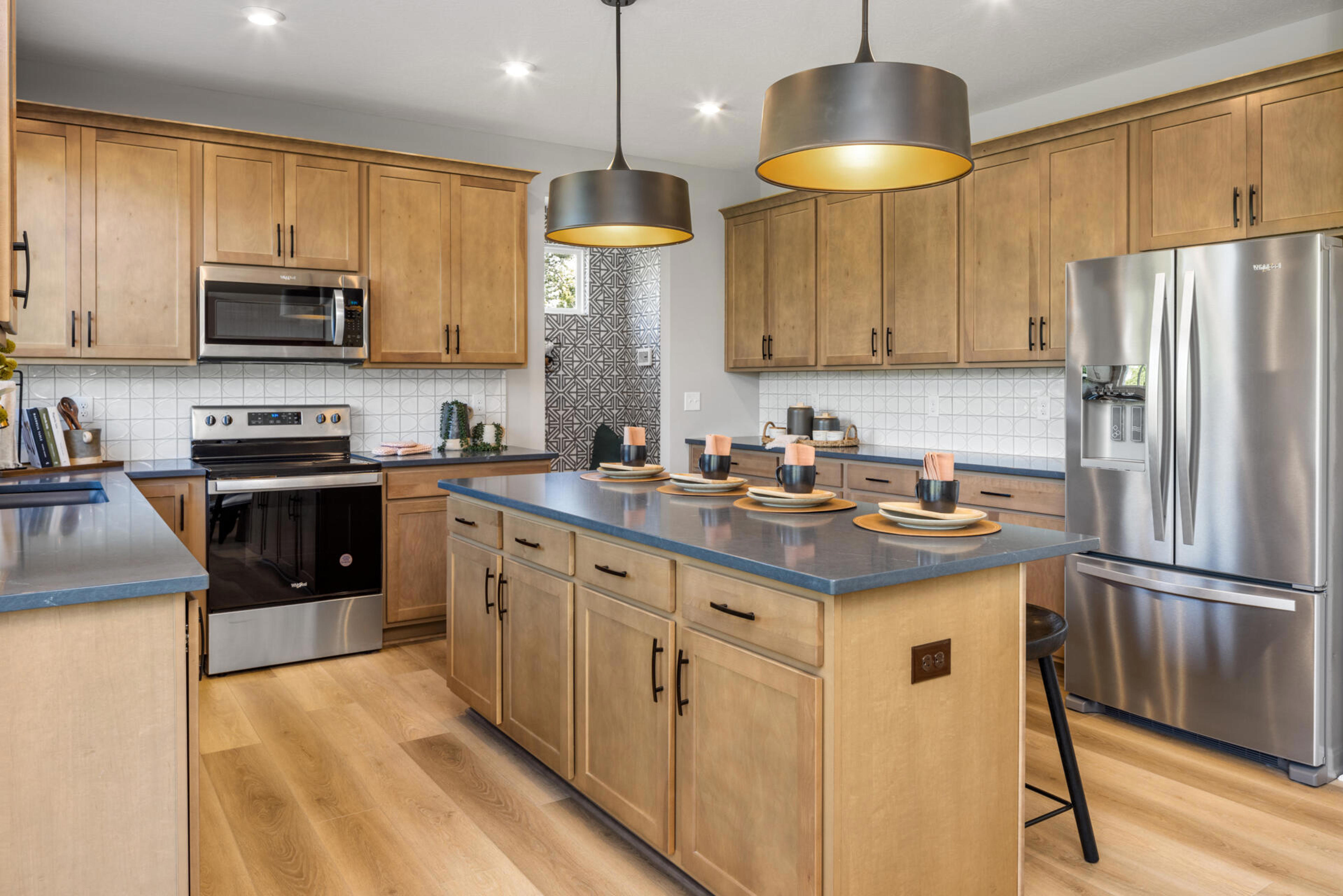
Your choice of cabinet style will set the tone for your overall kitchen design.
Typically, kitchens have two sets of cabinets – base cabinets and wall cabinets -- but you may also have a tall cabinet going from top to bottom that can serve as a pantry cabinet. If you have a high enough ceiling, you may have room for an additional row on top. To-the-ceiling cabinets can produce a truly stunning look, but will add significantly to your costs and may not be practical given that the third row will be difficult to reach.
Cabinet construction types:
Though a cabinet is essentially a box with a door, there are some fundamental structural variations. Here are some terms you may hear:
Materials:
Kitchen cabinet styles:
Although specific variations are virtually endless, cabinet styles generally fall into one of these broad groupings:
Resources on Kitchen Cabinets:
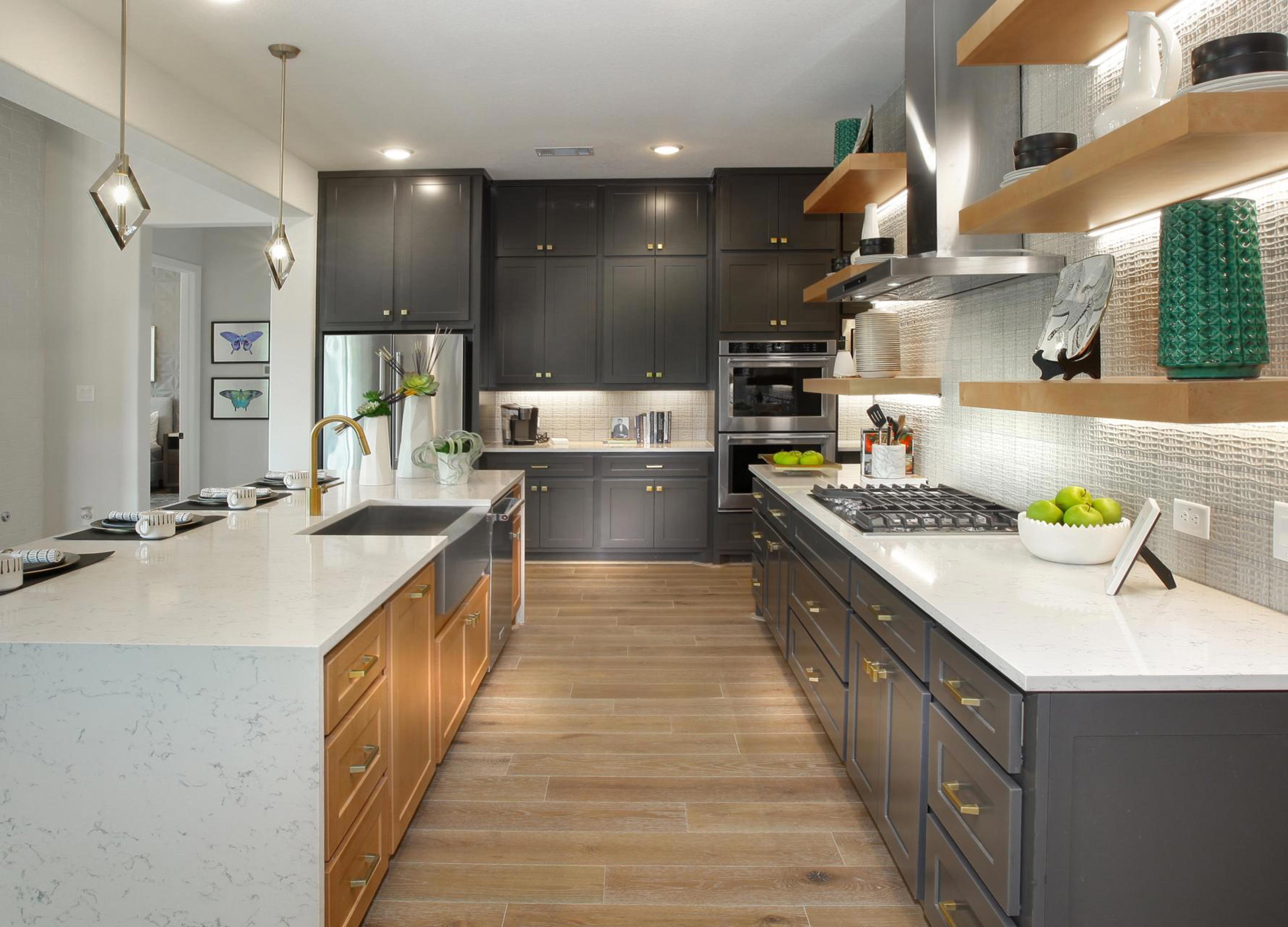
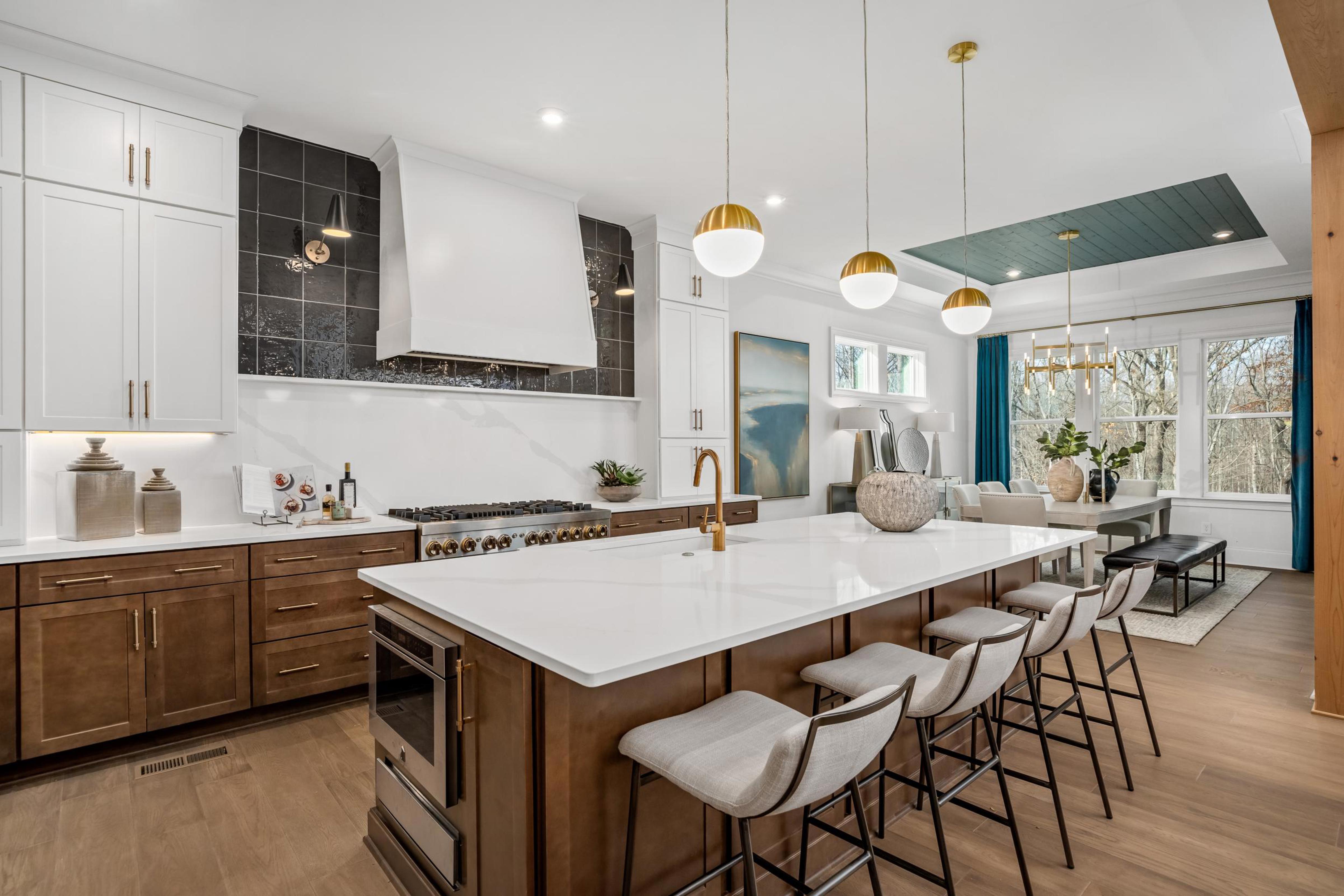
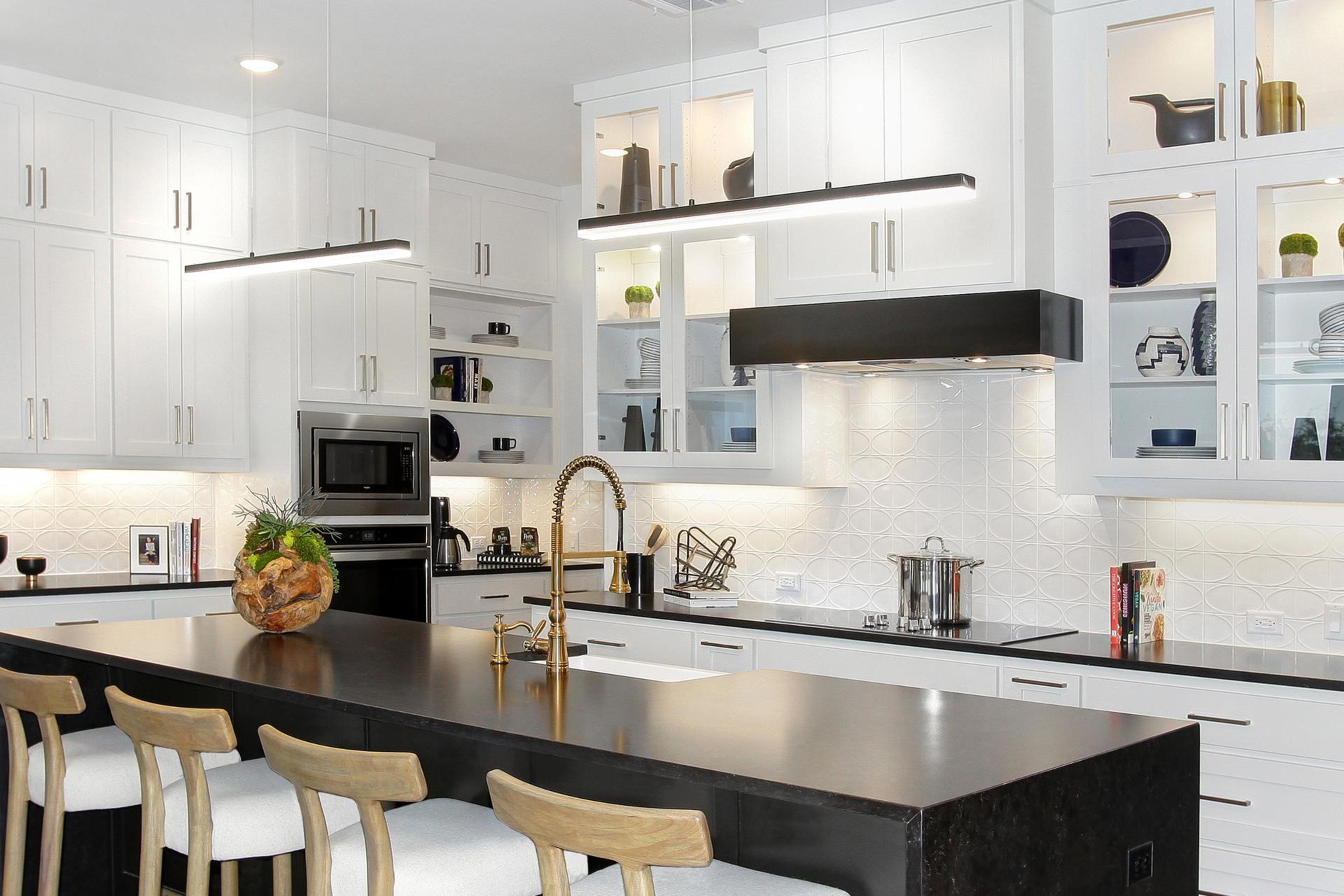
If the kitchen is the hub of the home, the island is the hub of the kitchen. Kitchen islands have been a standard feature in open floor plans for decades, but have continued to evolve.
Island features can include:
Kitchen islands are also a great place to add a splash of color or a contrast in countertops or cabinetry.
Resources on Kitchen Islands:
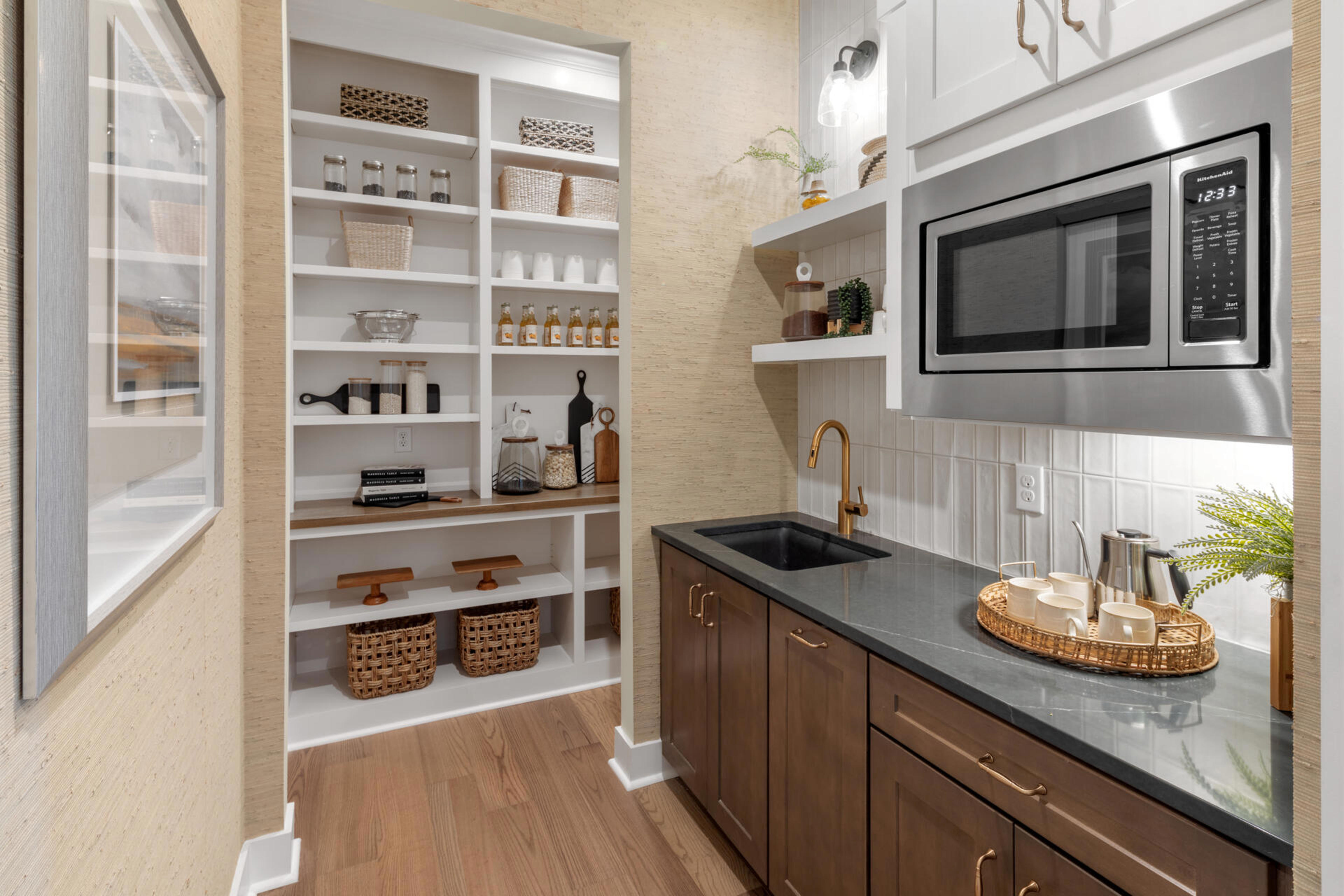
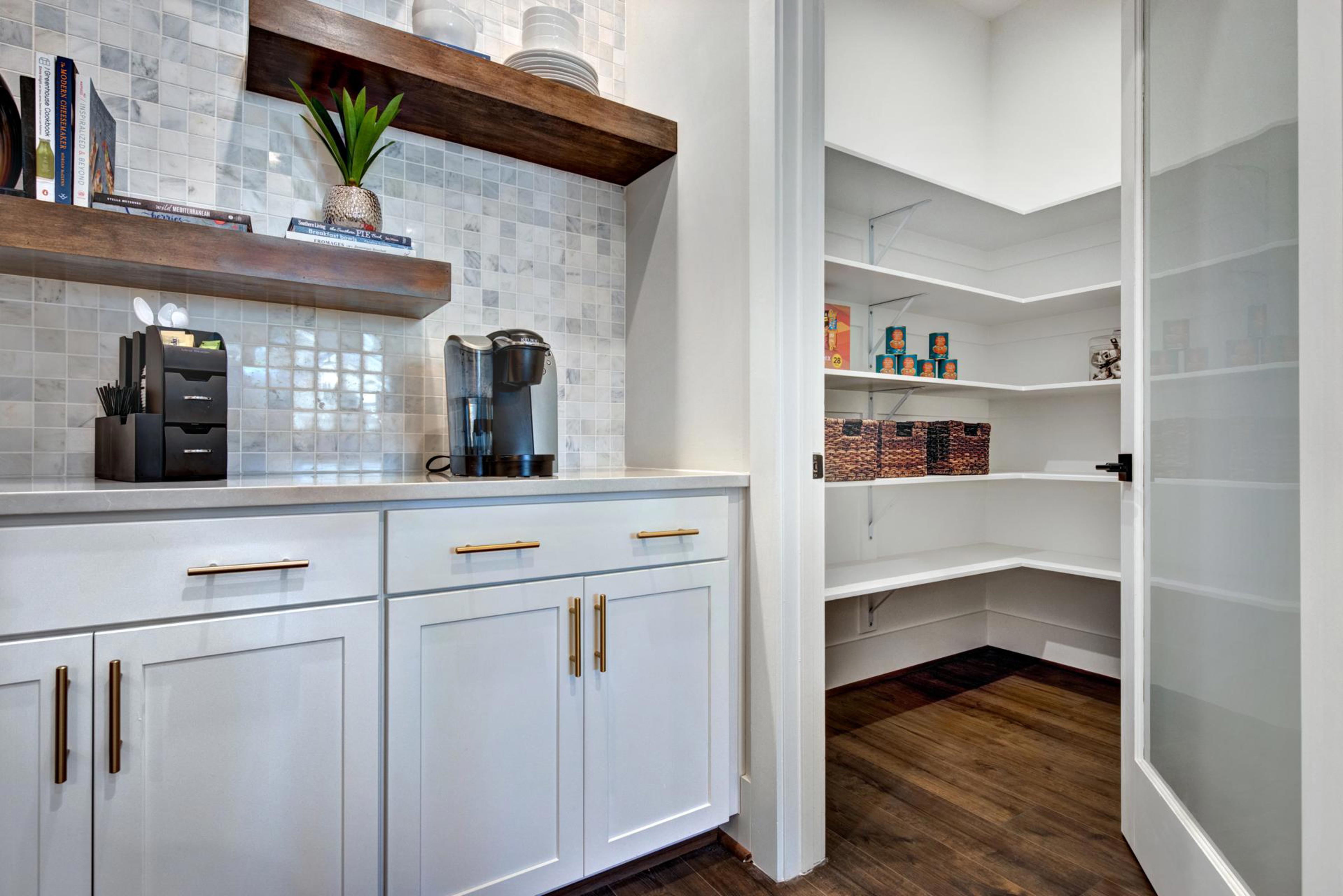
When it comes to pantries, more is more. Custom-built homes increasingly have walk-in pantries in which every cubic inch of space is optimized. Pantries can have their own countertop areas for small appliances to keep them off of the main countertop space.
With adjustable shelving, you can create the most efficient spacing for your needs. Wire mesh shelving is fine for some uses, but small items can slip through the holes. Solid shelving tends to be more reliable.
Of course, clever organizing is not limited to the pantry itself. Here are some efficient storage features that could be used inside the pantry or elsewhere in the kitchen.
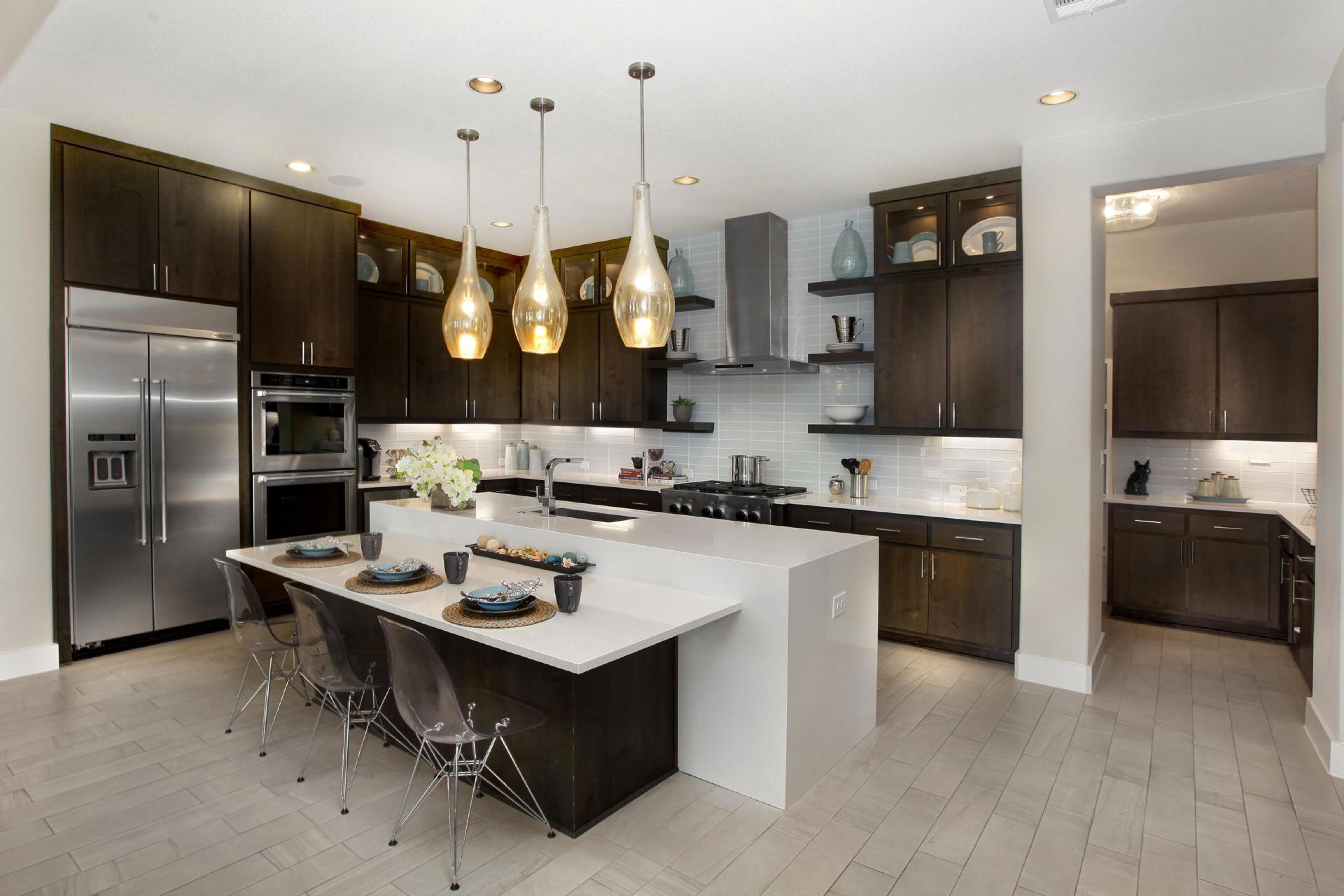
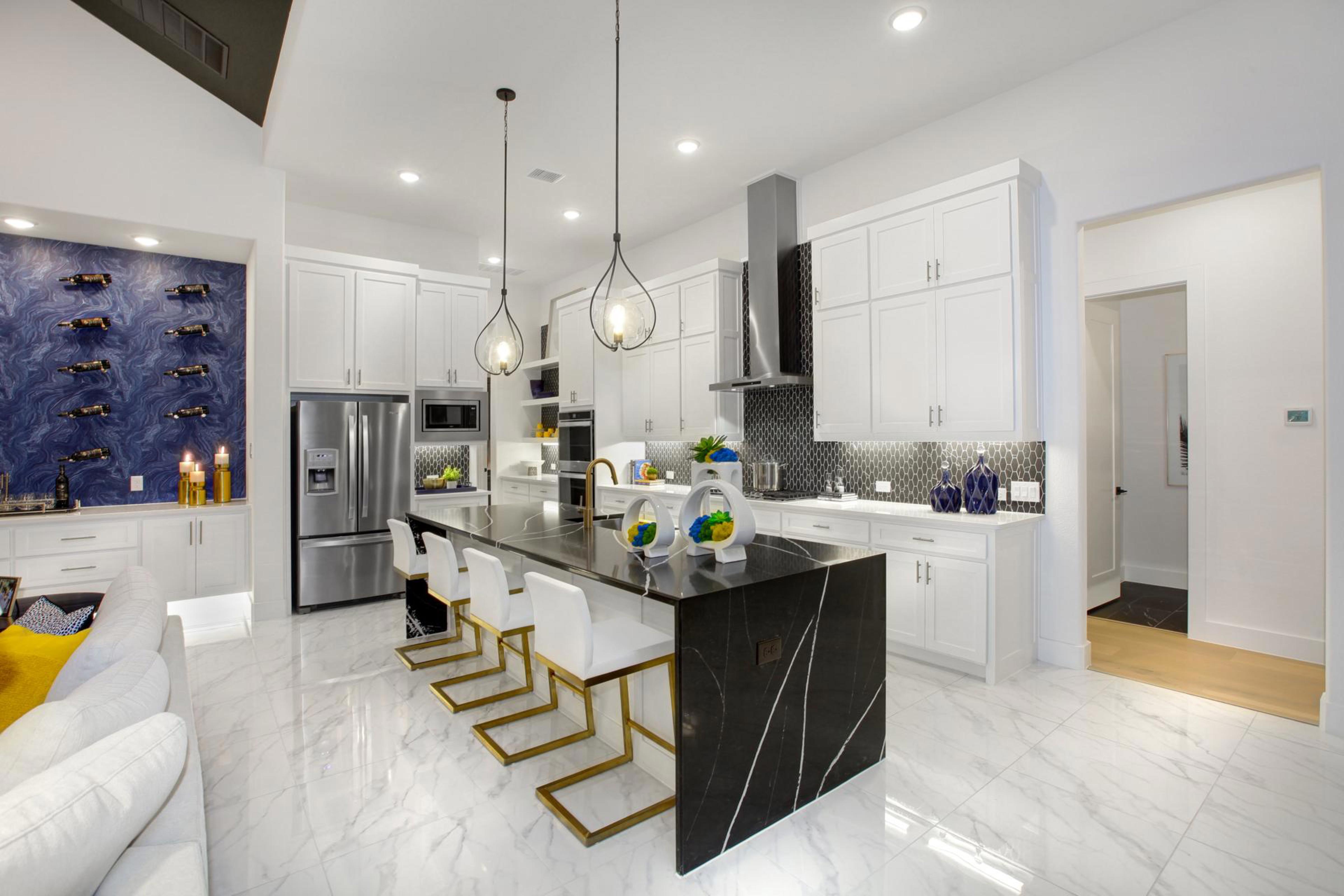

Choice of countertops is a big commitment because this is not something you will change very often. In addition to appearance, countertop materials differ in more practical respects, with some being more maintenance-free than others.
Resources on Countertops:
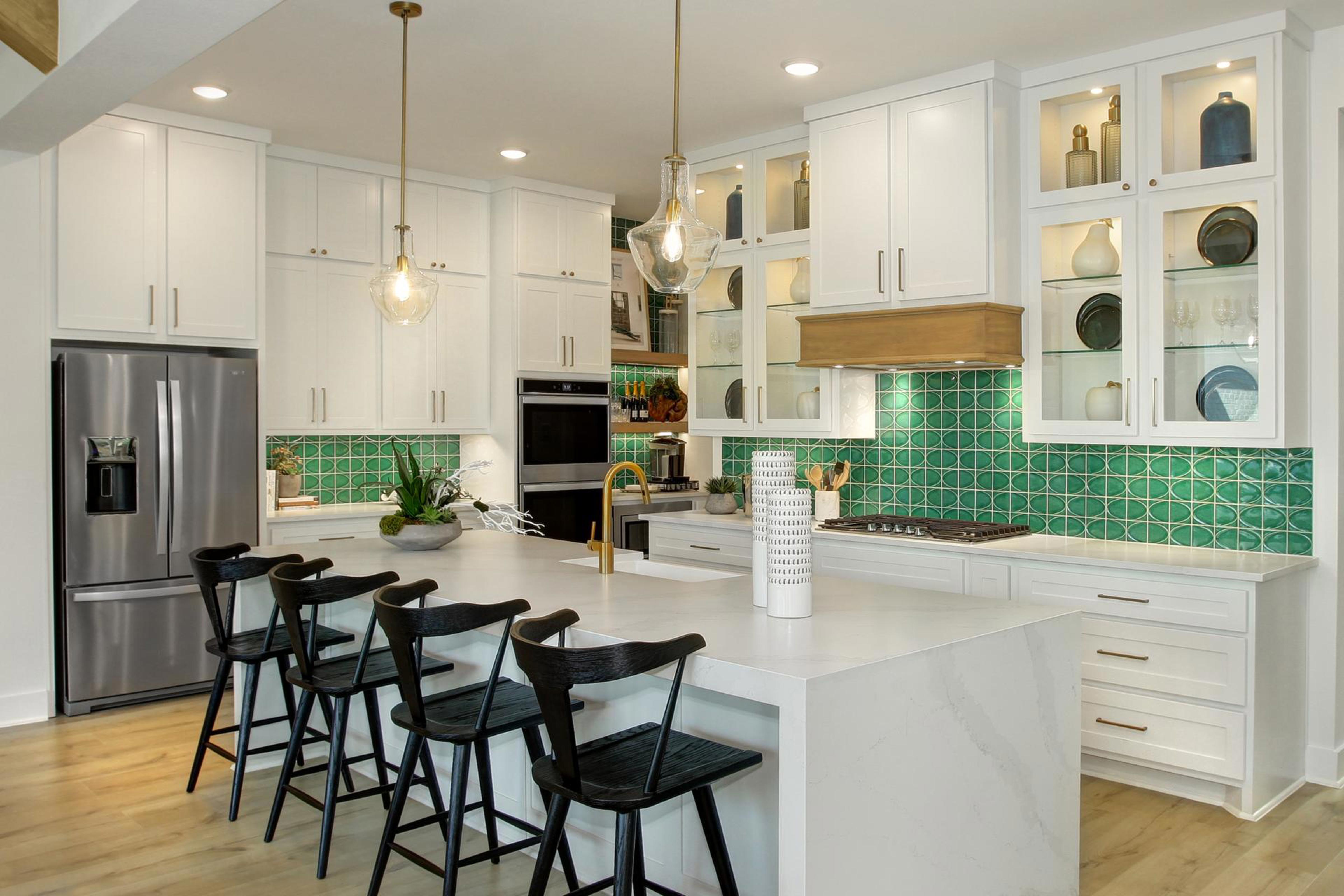
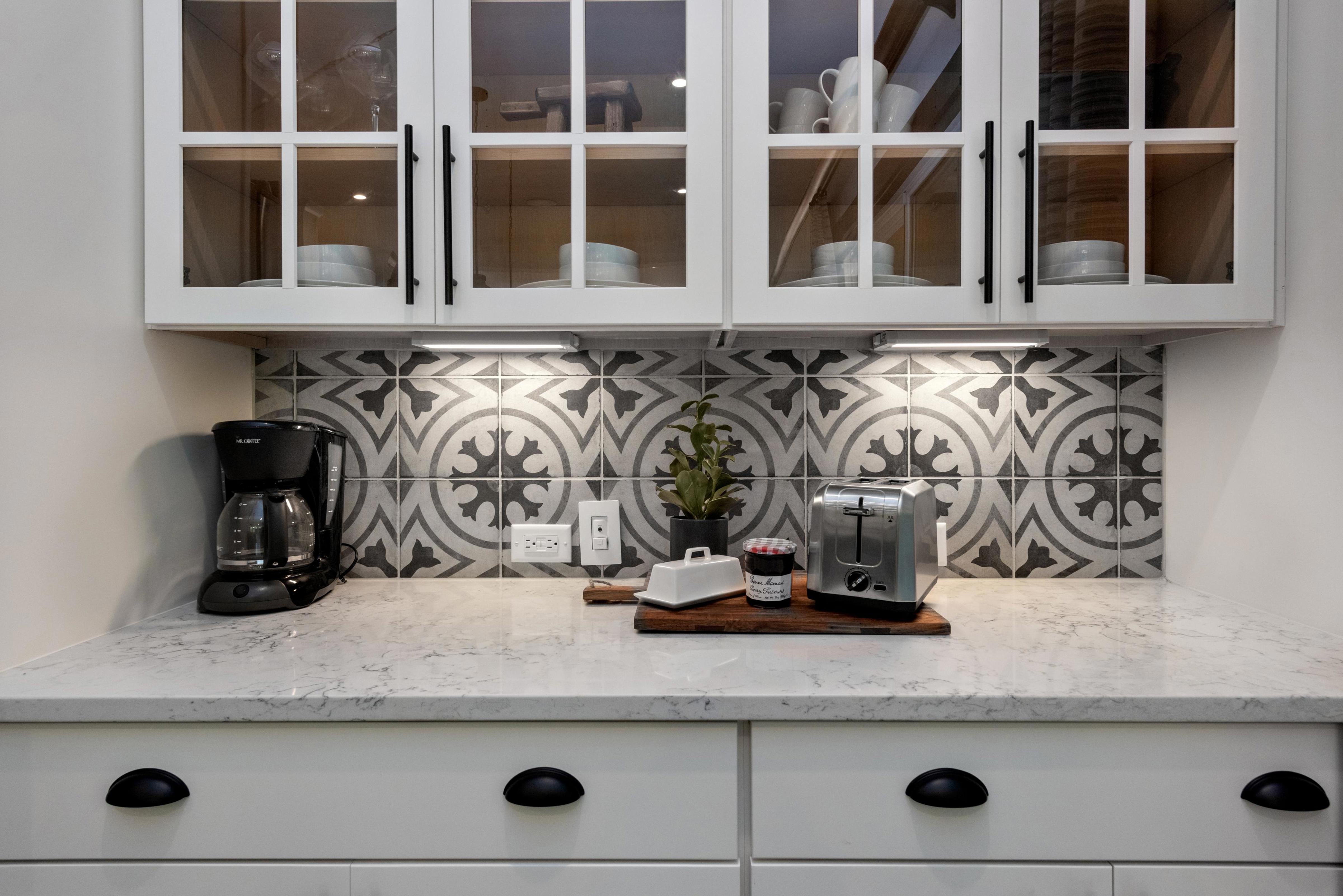
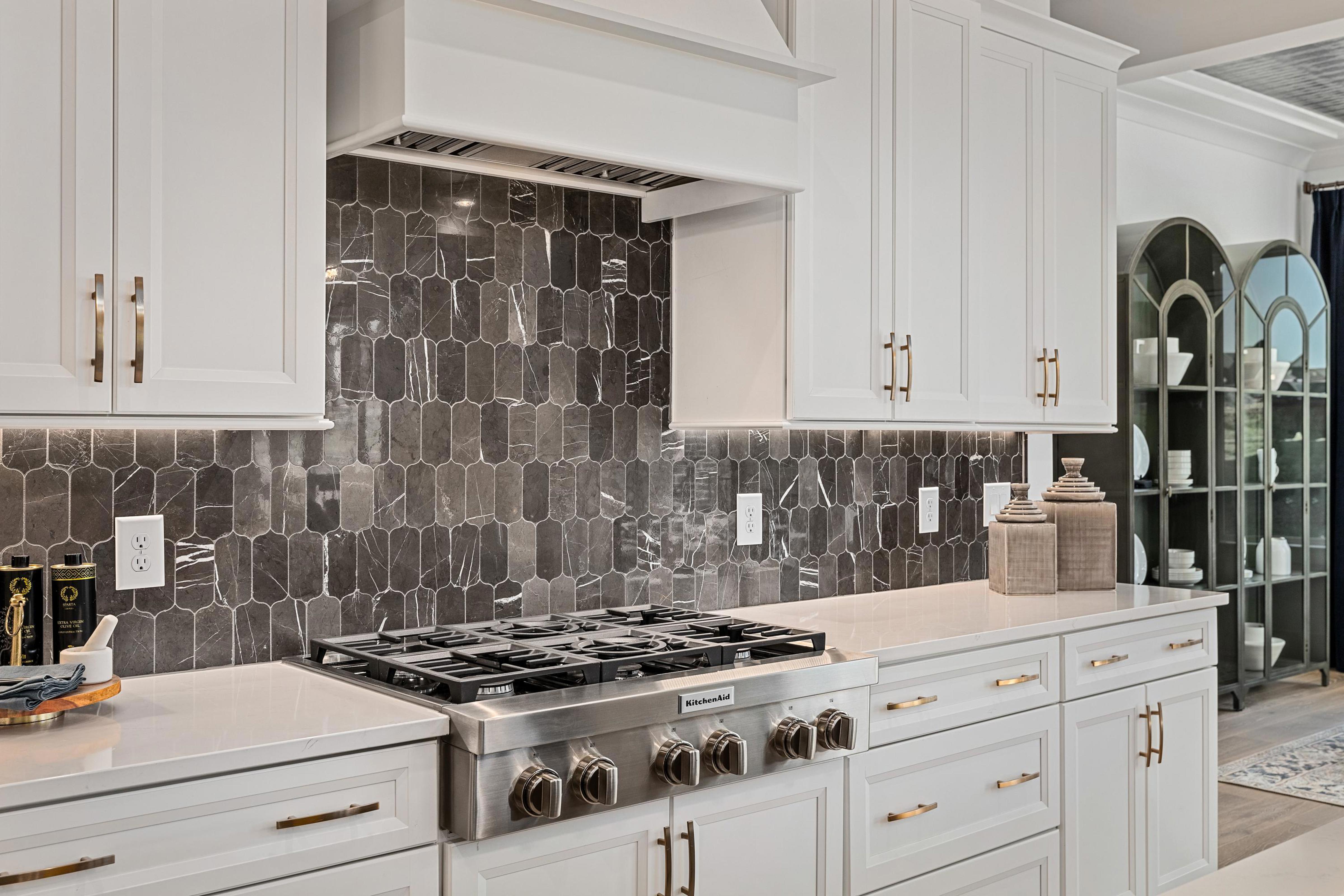
The time to decide on a backsplash is after you have chosen cabinets and countertops. Consider how different backsplash materials blend in with and complement those other choices. This is also an opportunity to introduce color or decoration, but keep practical matters in mind. It’s called a “backsplash” for a reason, so if you do a lot of cooking pick a material that will be easy to clean.
Read more about backsplashes:
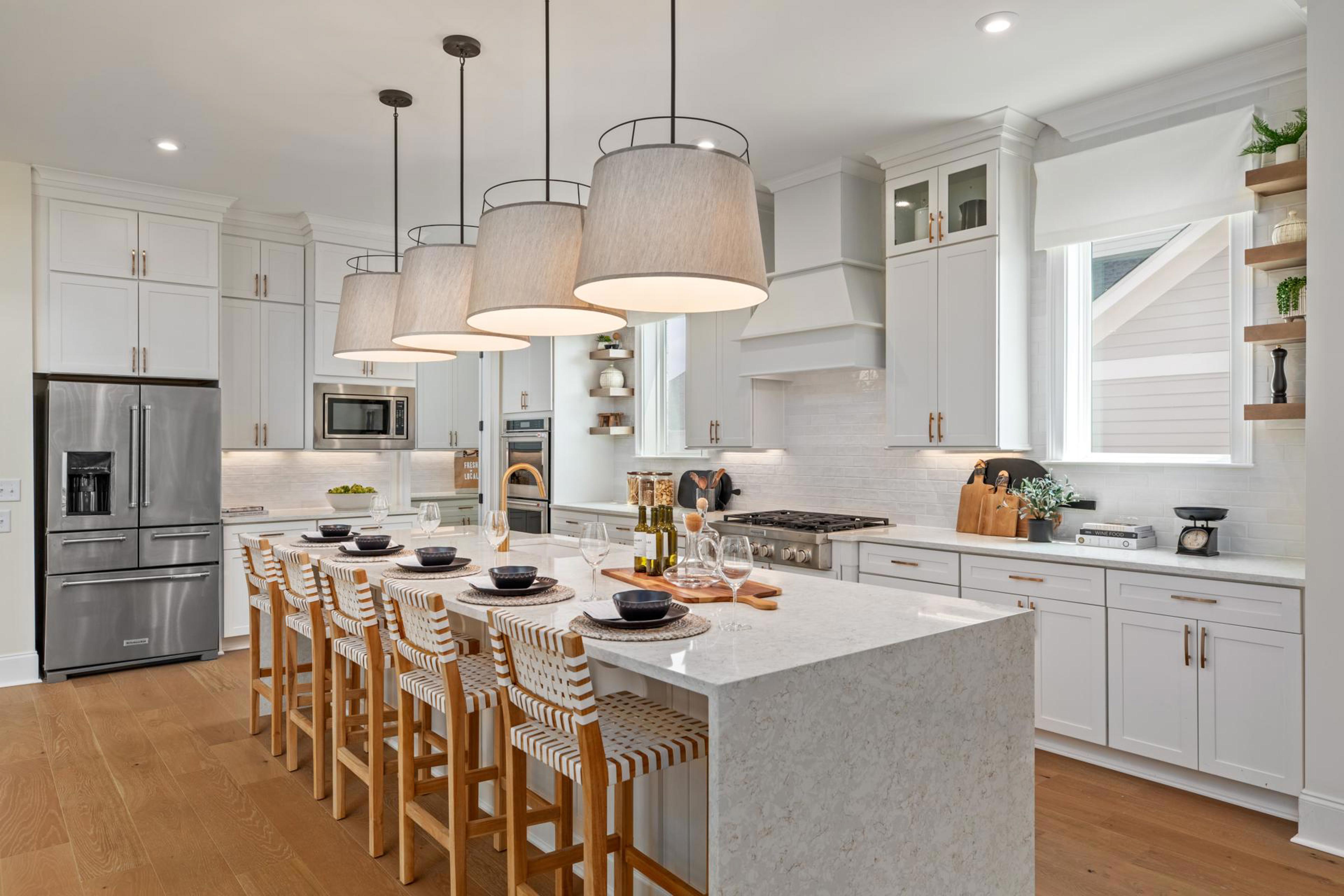
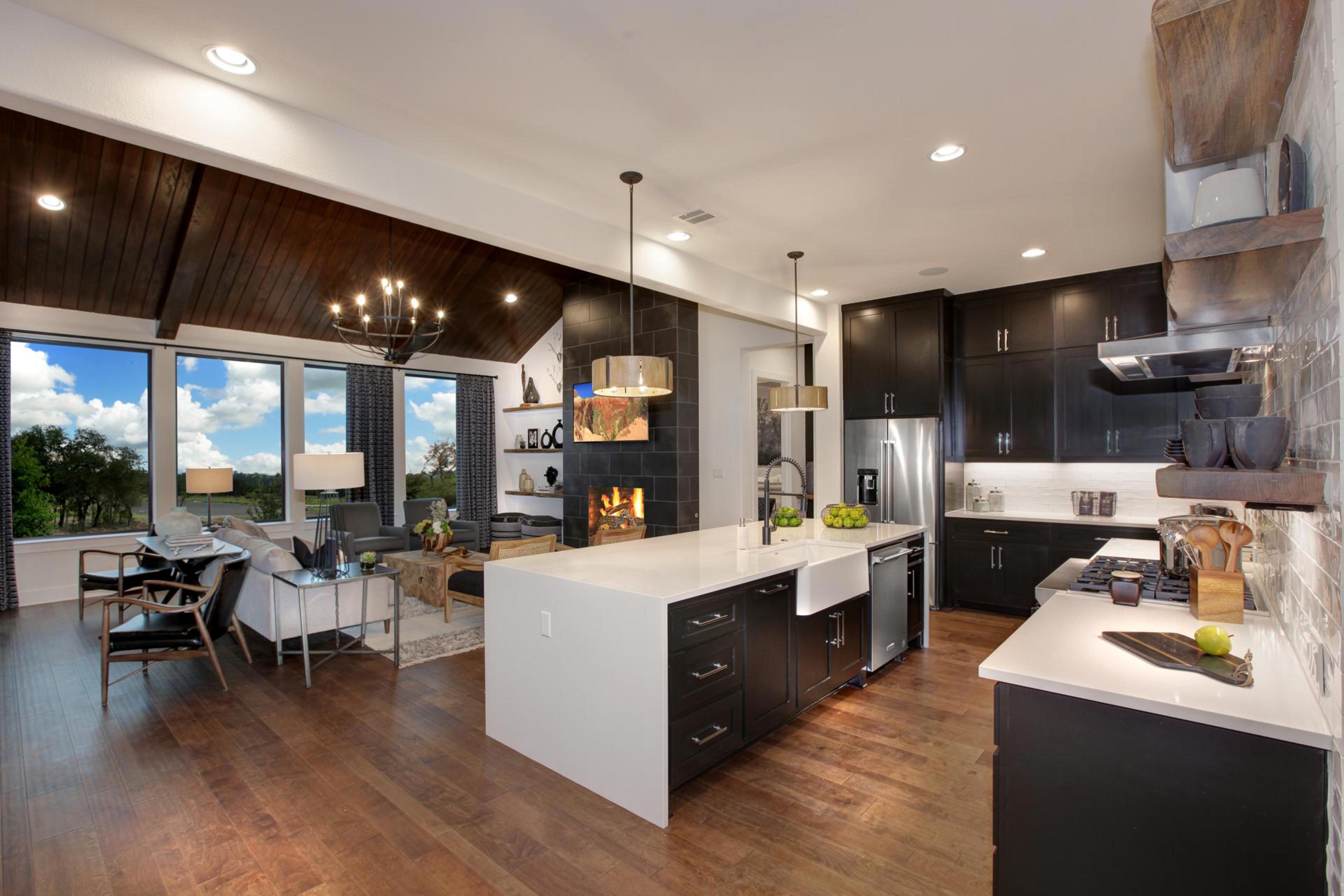
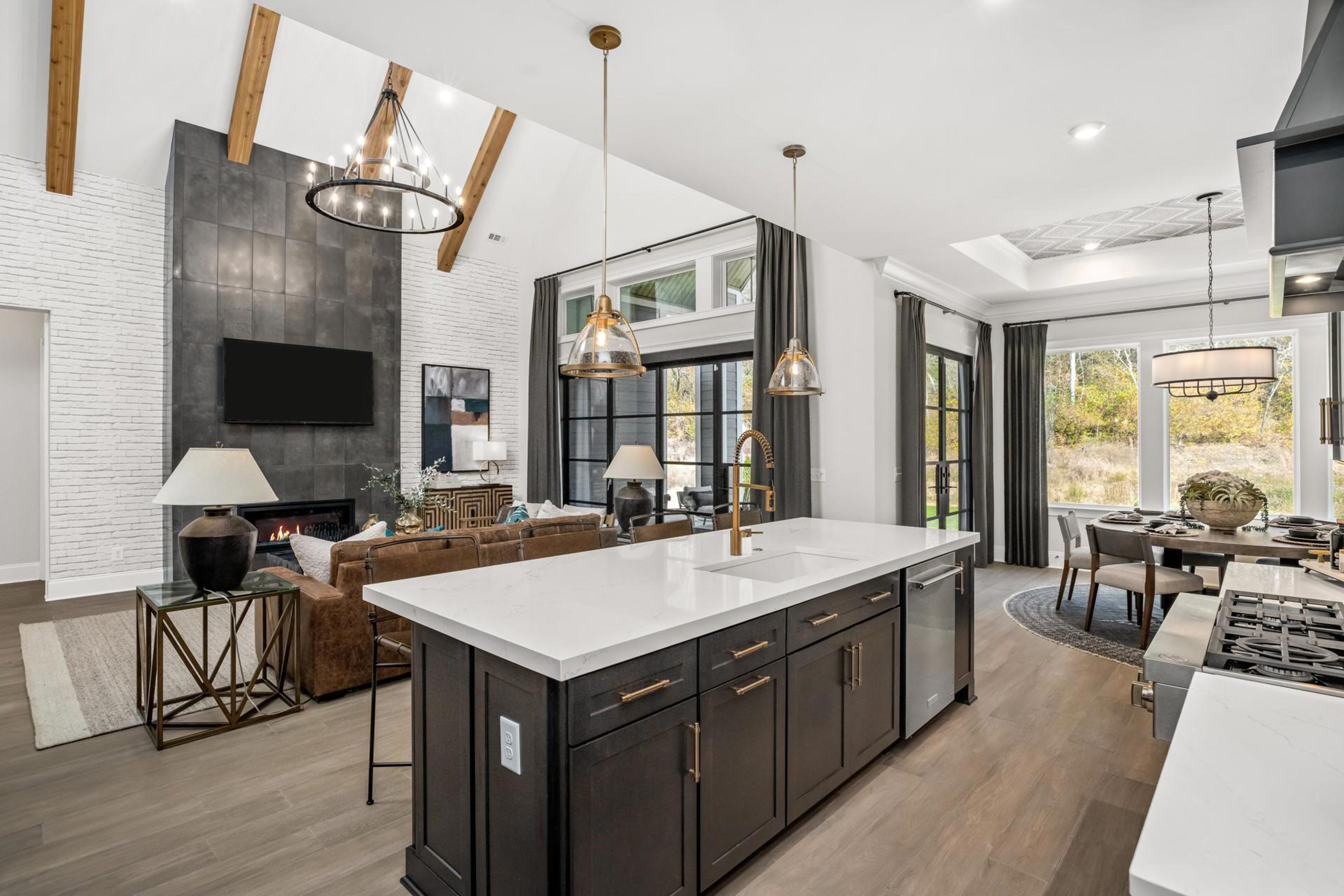
Kitchen flooring options used to be limited to vinyl and linoleum at the low end and ceramic or porcelain at the high end. Now, there are additional choices, though these come with some risks.
Resources on Kitchen Flooring:
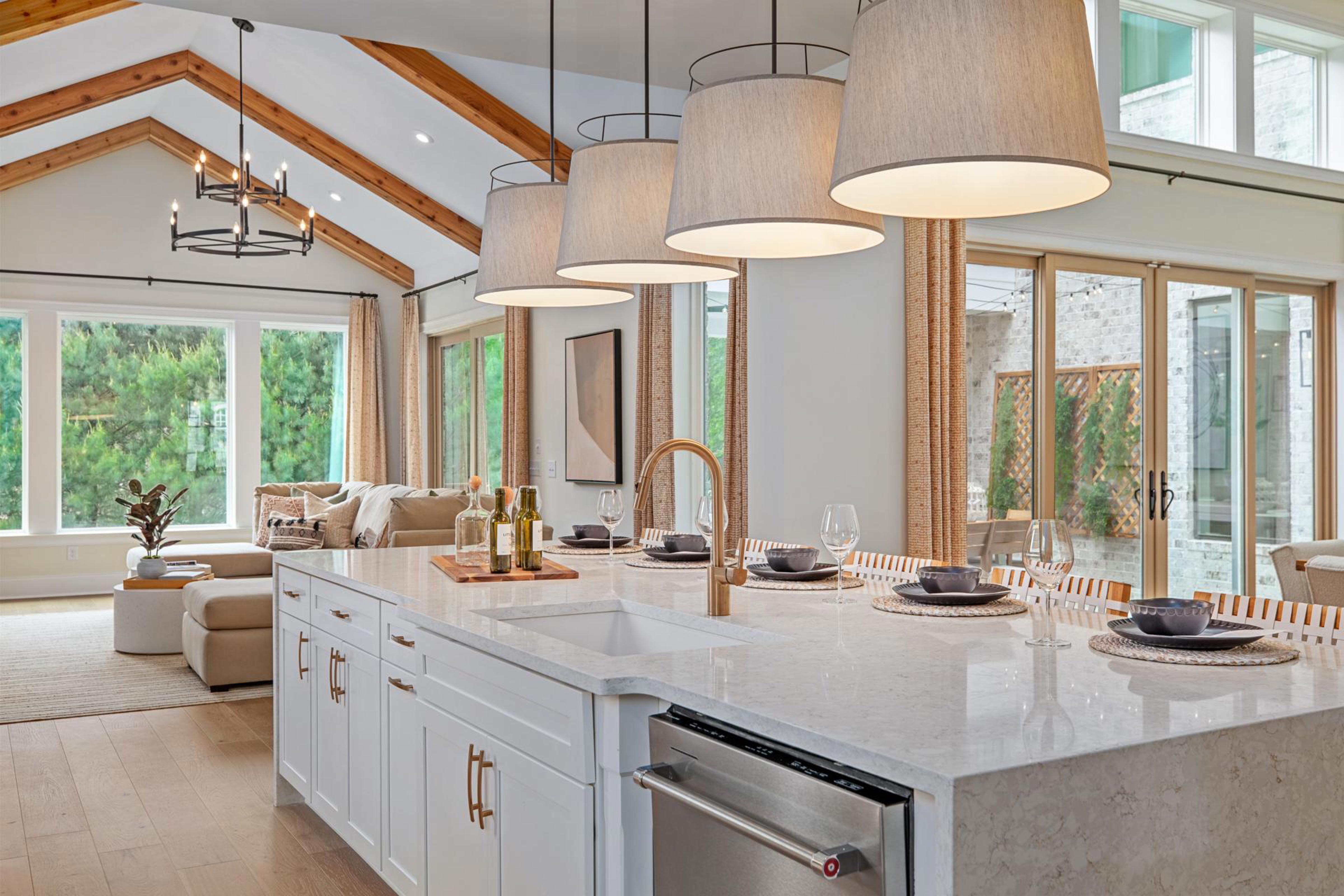
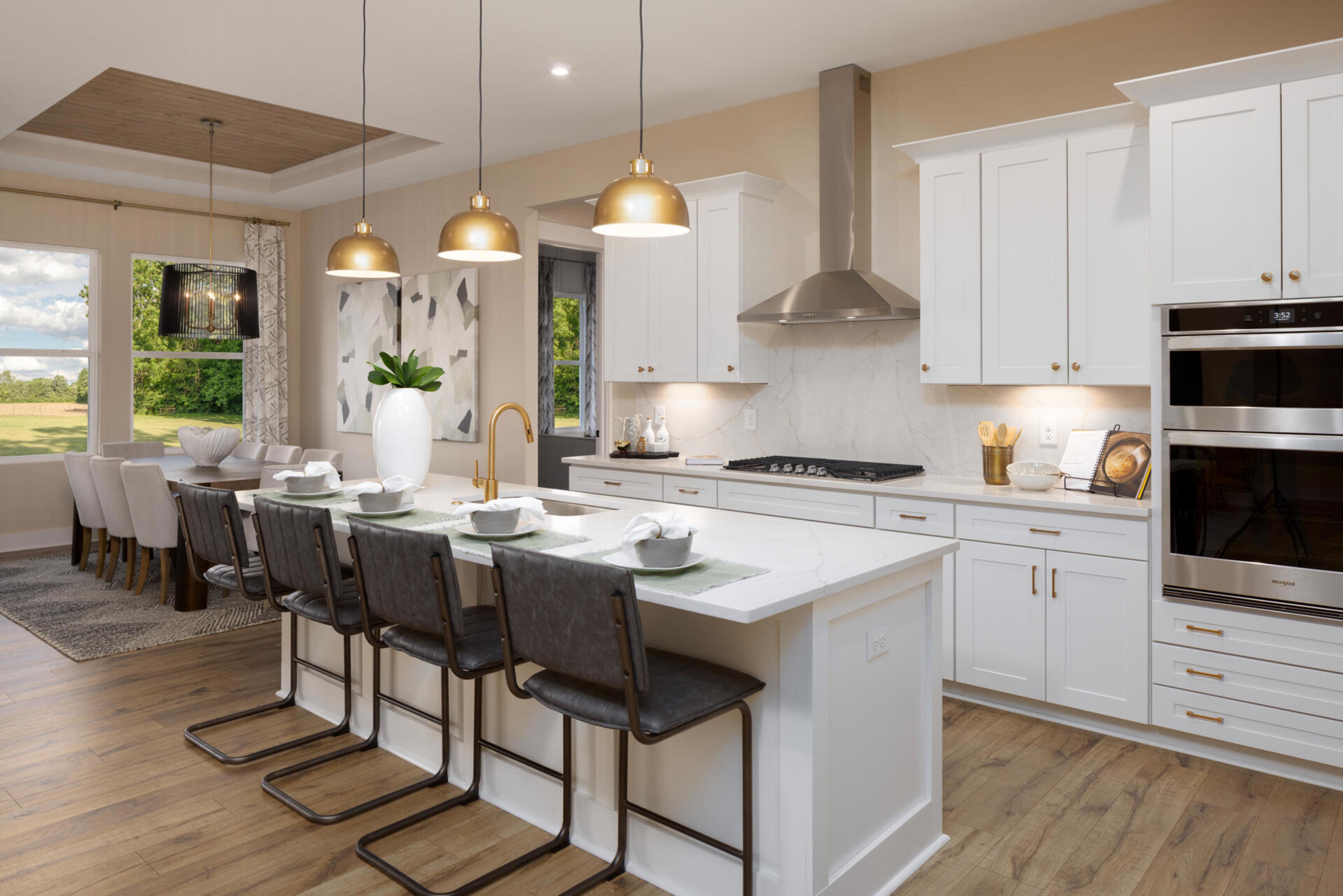
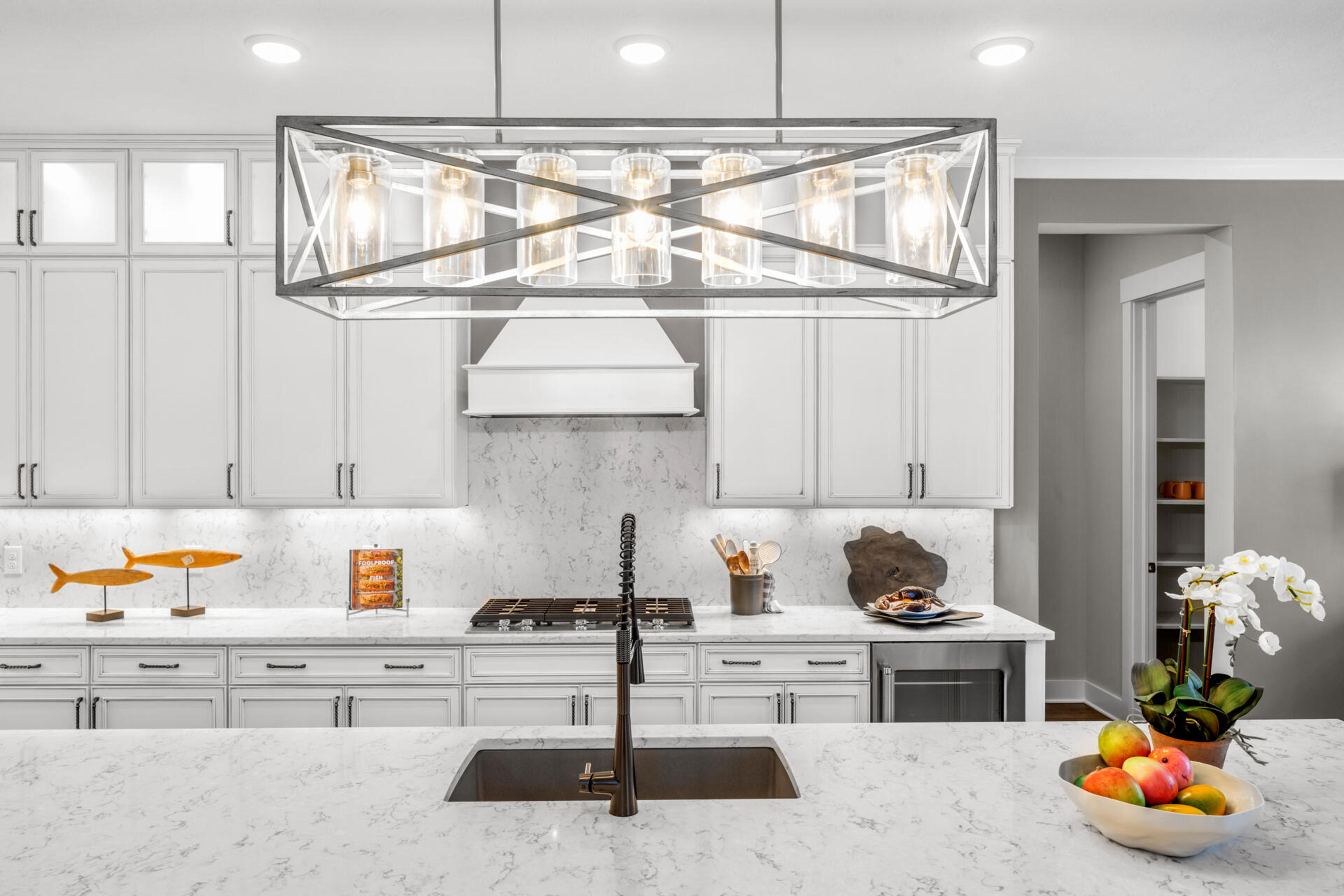
Resources on Kitchen Lighting:
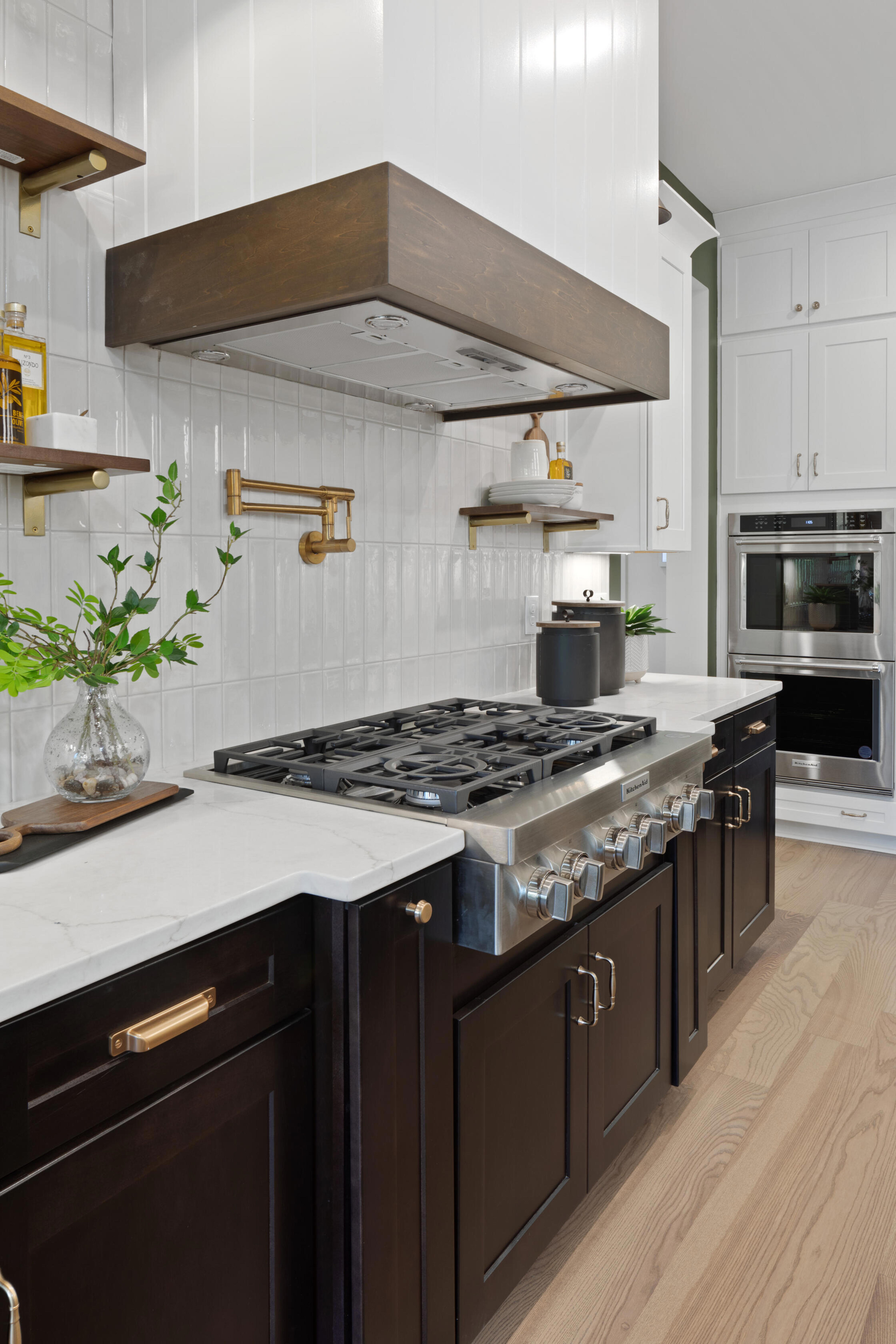
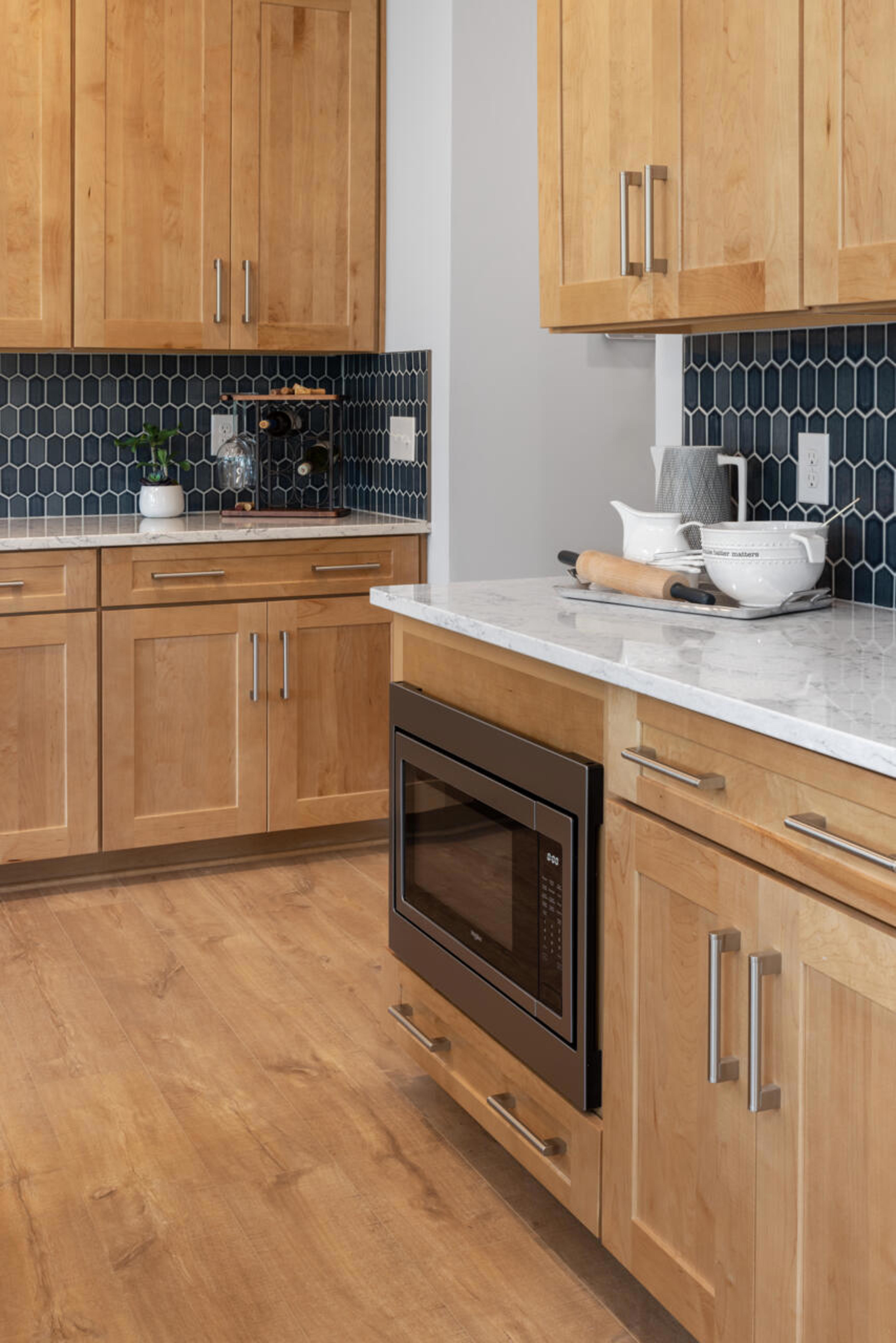
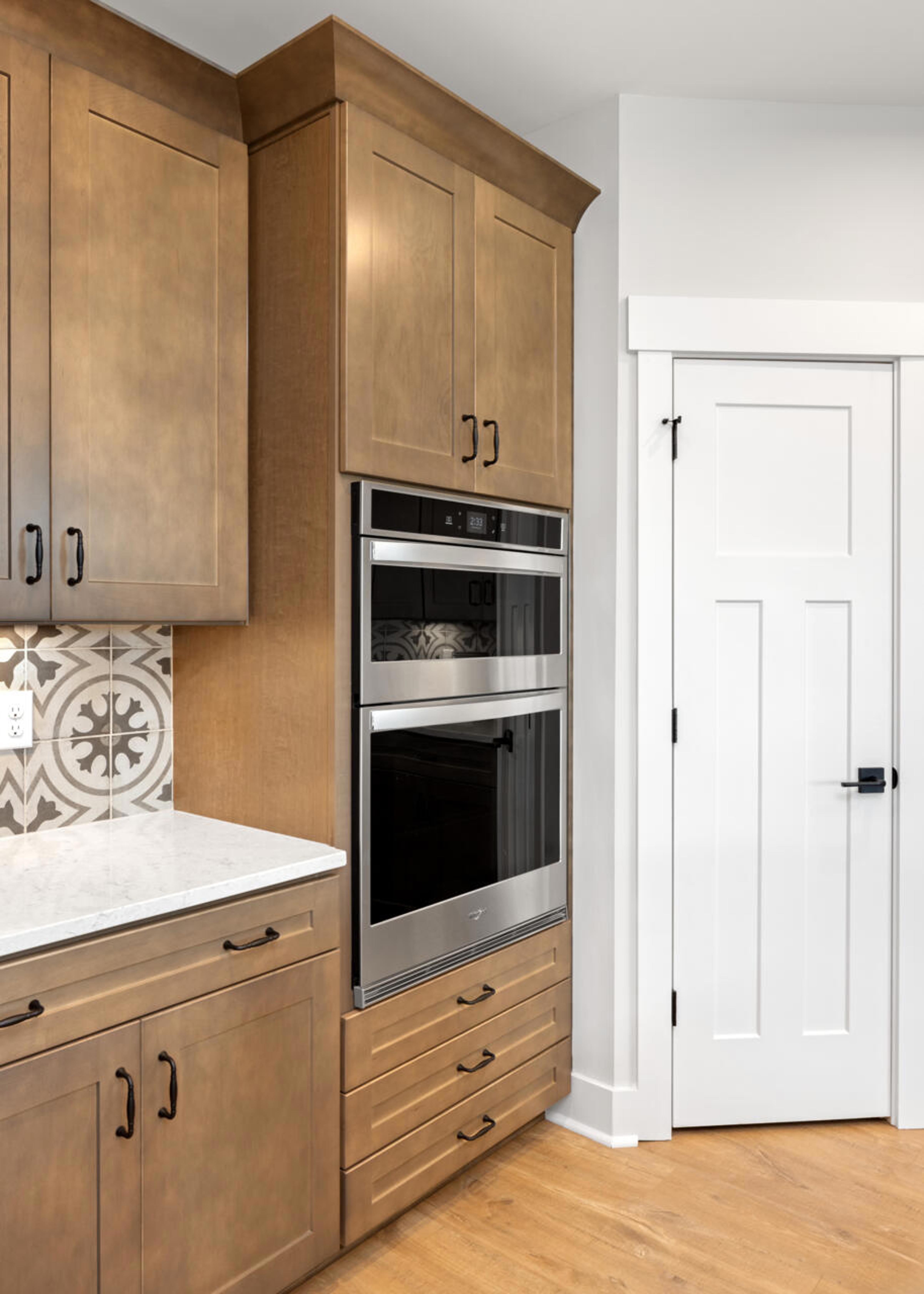
If you’re building a custom home, you’re probably not keeping your old appliances. Now is the time to upgrade to built-in appliances that are part of your kitchen design instead of something you have to design around.
Resources on Kitchen Appliances:
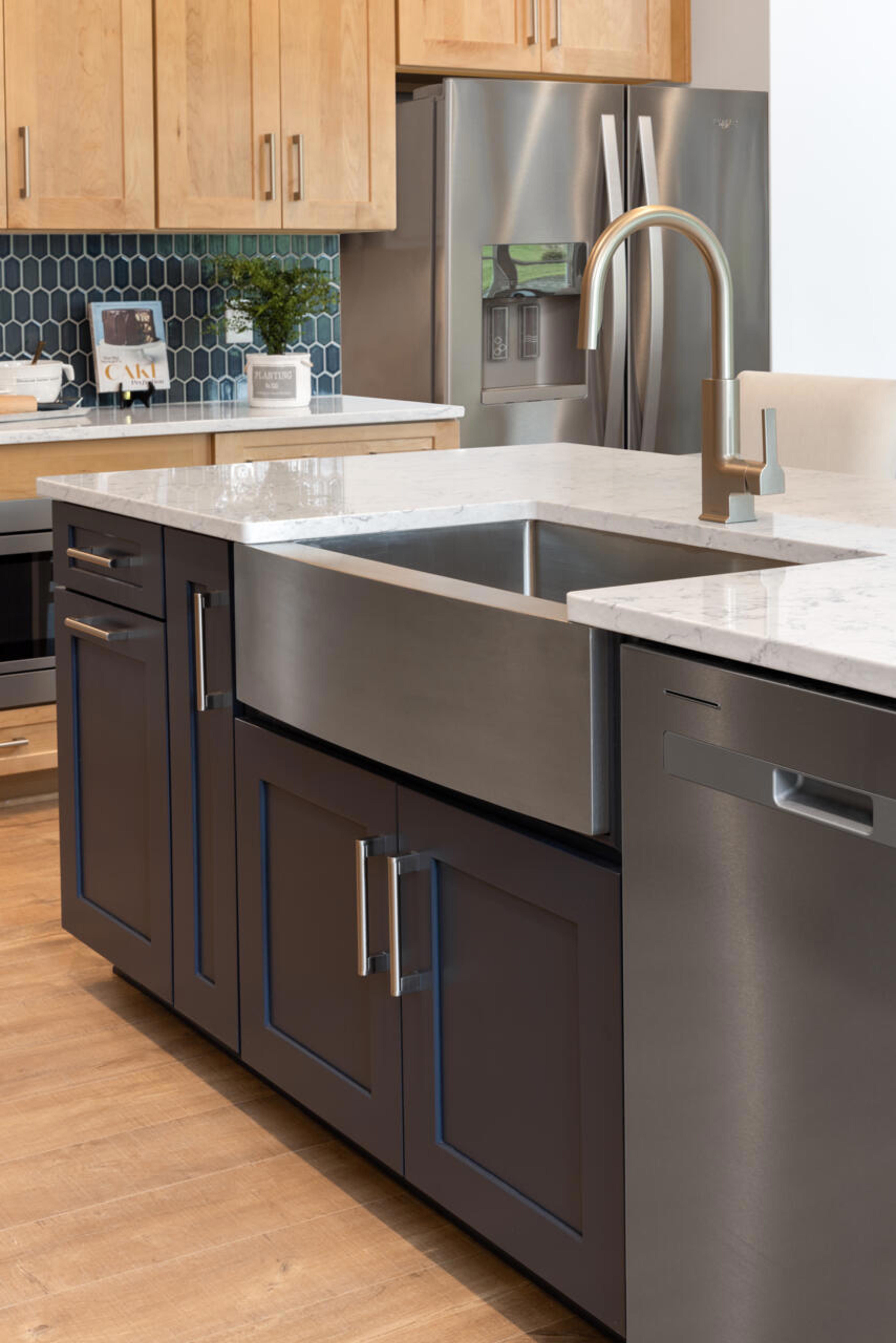
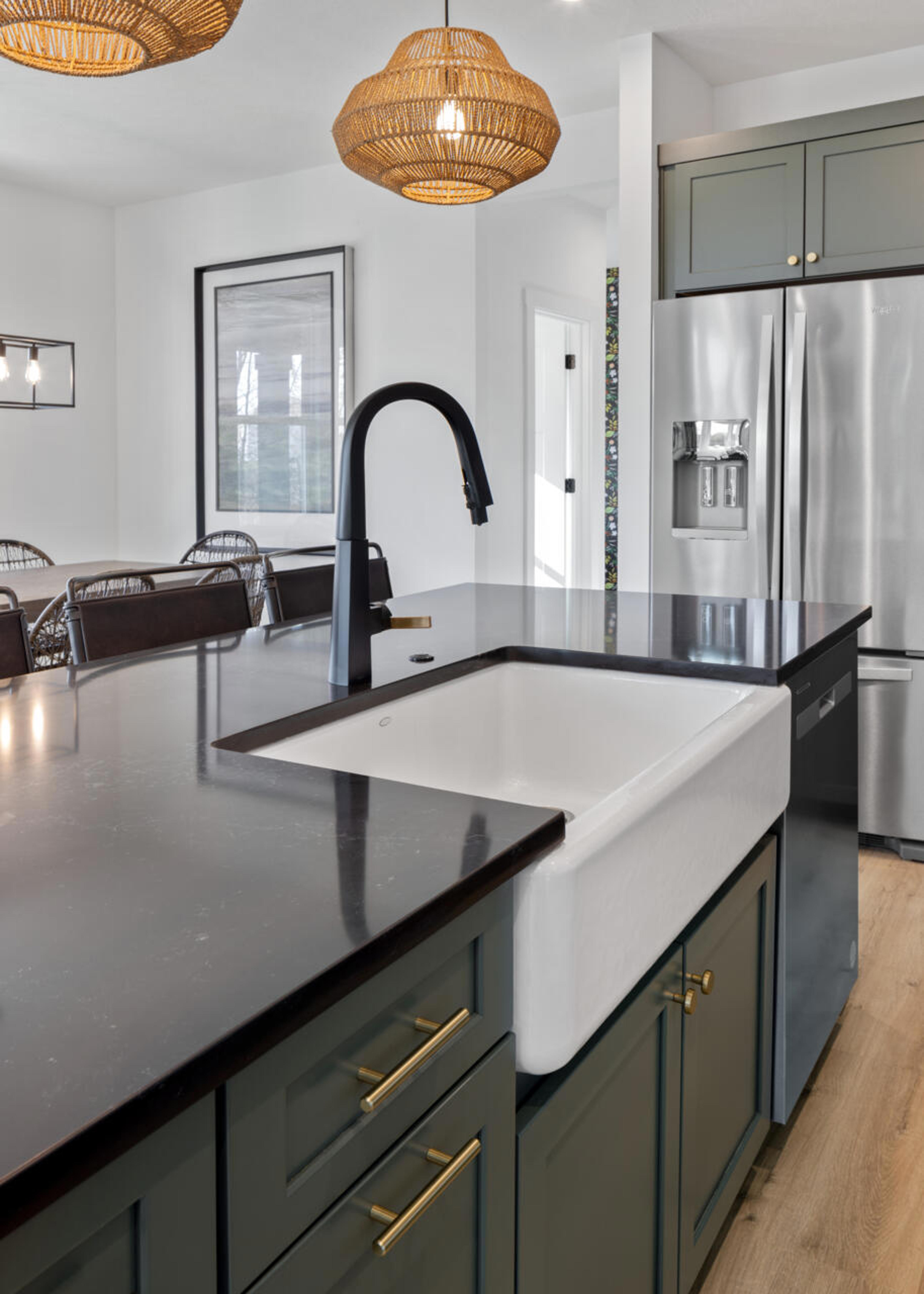
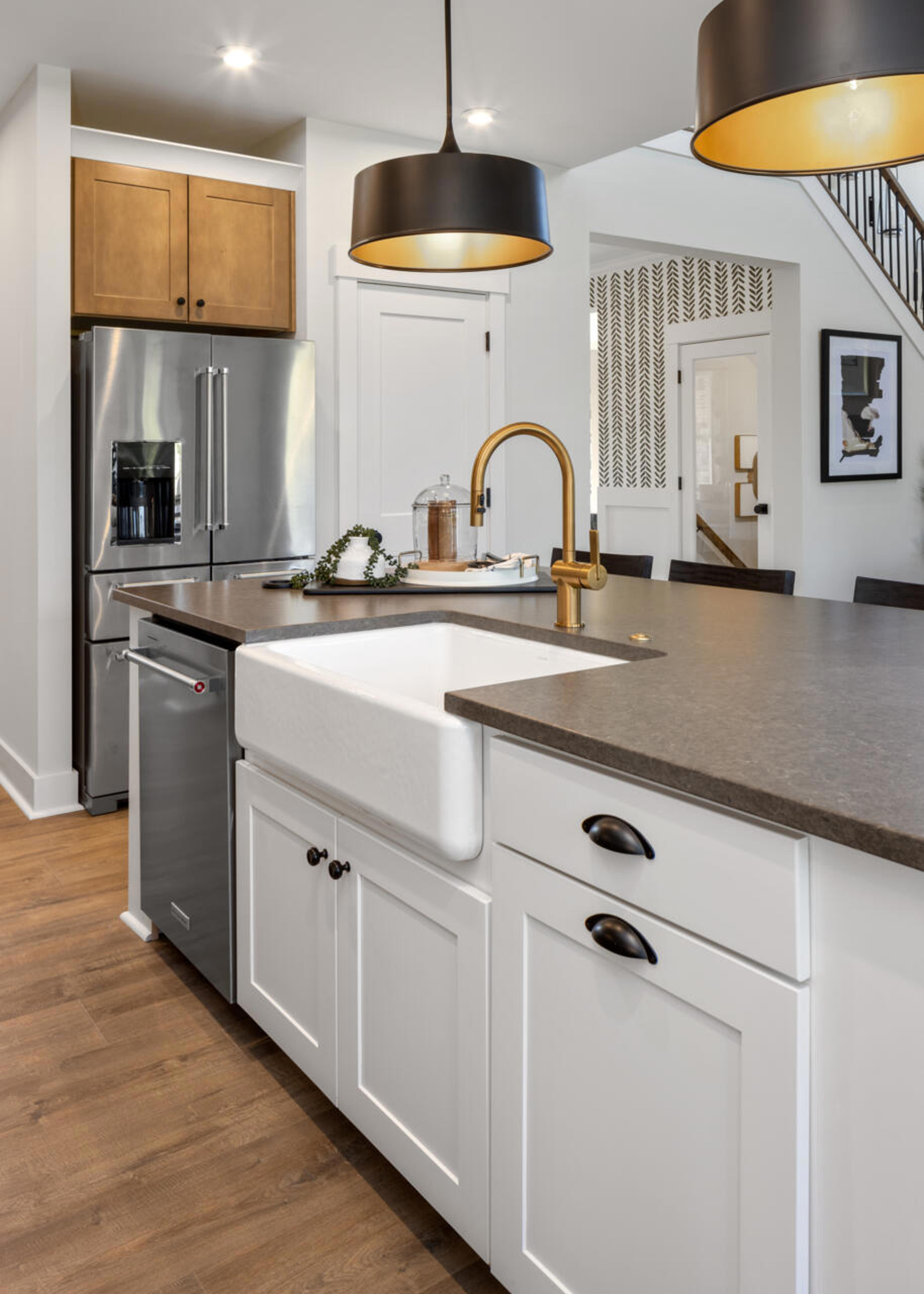
Kitchen sinks: The most important thing to get right the first time is location. Where do you want the sink? You can swap out the fixtures later, but the location is pretty well set. That includes the decision of whether to have a second sink. This could be a standard double sink, or two sinks in separate locations, or maybe a small sink built into the island for food prep.
Kitchen sink materials typically include fired clay, stainless steel, copper and more recently a granite composite. Farmhouse sinks are extra deep and often the front of the sink is exposed as an apron. If you go with stainless steel, be warned that your belt buckle may scratch it.
Faucets: The big decision with kitchen plumbing fixtures is how many holes get drilled into your new countertops and where to drill them. Fortunately, most kitchen sink faucets nowadays are the same in this regard -- a single hole with the valve on the faucet. The rest of it is just a matter of style and color -- chrome, nickel, bronze. Black fixtures are great for a modern look.
Most kitchen sink faucets also have a pull-out sprayer with styles varying on whether the sprayer retracts all the way or snaps back in place with a visible lip.
Touch vs. touchless: Hands-free technology now enables you to turn the water on and off without turning the handle. Touchless faucets are activated by motion sensors, while touch faucets are activated when any part of your hand or arm touches the sensors built into the handle and spout.
Pot-filler faucets: In addition to your sink faucets, you can install a “pot-filler” faucet on the wall above your cooktop. This has practical value if you frequently cook for a large group, and it certainly adds a “wow” feature that your friends will envy. Although it is a bit pricey, this is the type of feature that is best done during construction instead of added later.
Resources on Kitchen Sinks & Faucets:
Family-owned and operated for 95 years, Drees Homes has earned the title of "America's Best Builder" (twice) from Builder Magazine, "National Builder of the Year" from Professional Builder Magazine, as well as the "National Housing Quality Award" from the National Association of Home Builders. This is known as the prestigious “Triple Crown” of national homebuilding awards. Headquartered in Ft. Mitchell, Kentucky, Drees operates in Cincinnati and Northern Kentucky, Cleveland, Indianapolis, Jacksonville, Nashville, Raleigh, Washington D.C., Austin, Houston and Dallas. The company operates as Drees Custom Homes in Texas. For more information, visit dreeshomes.com.